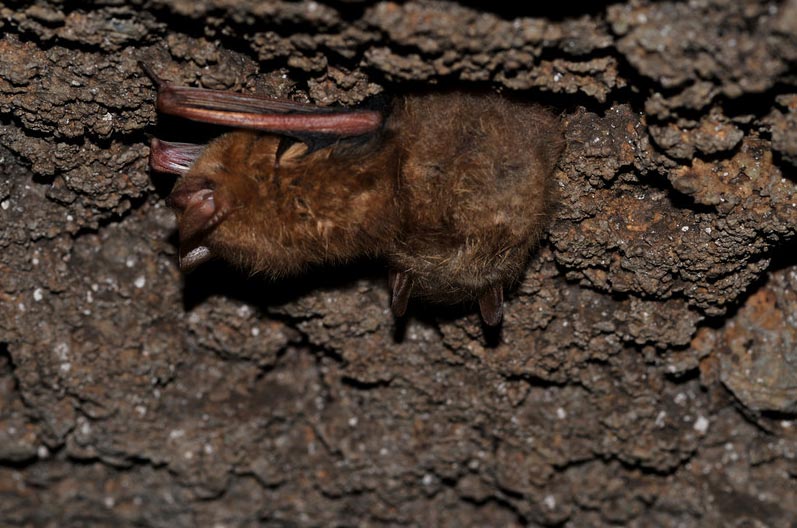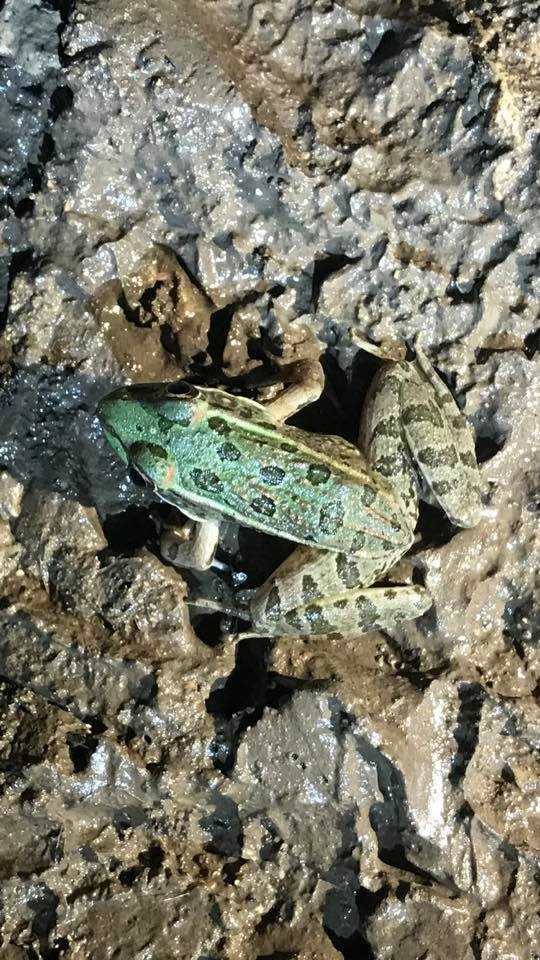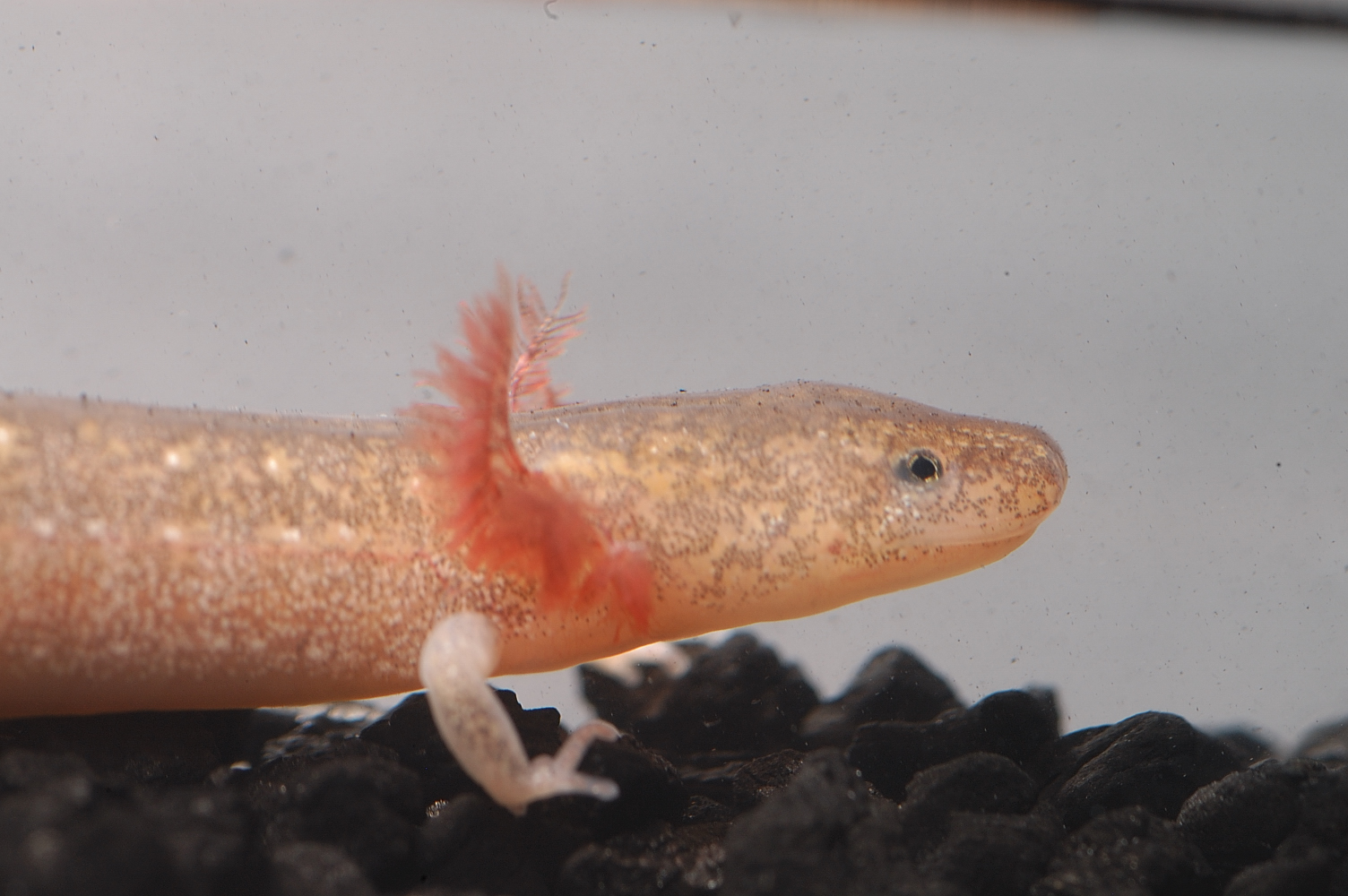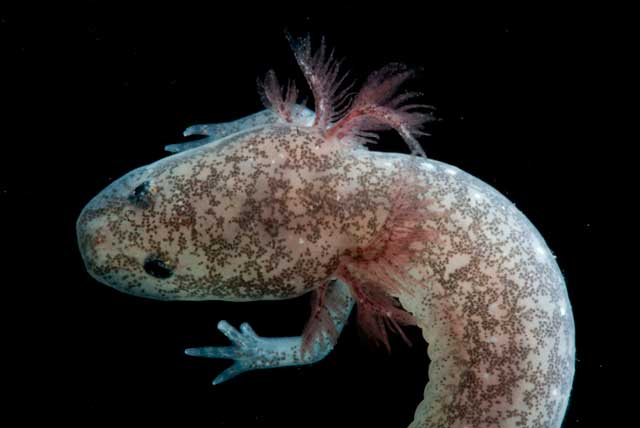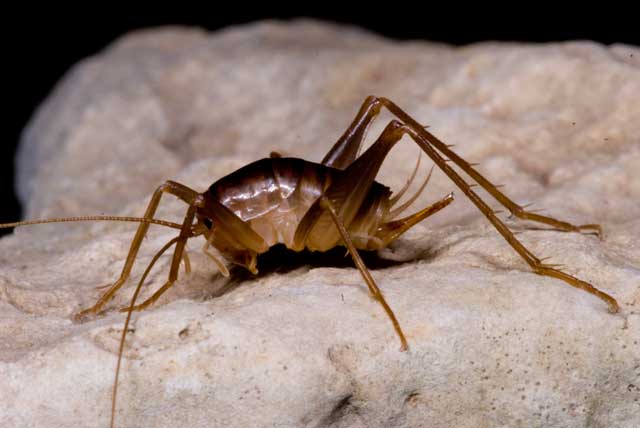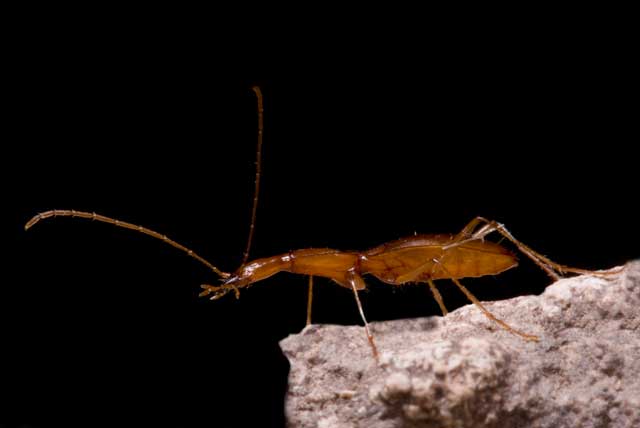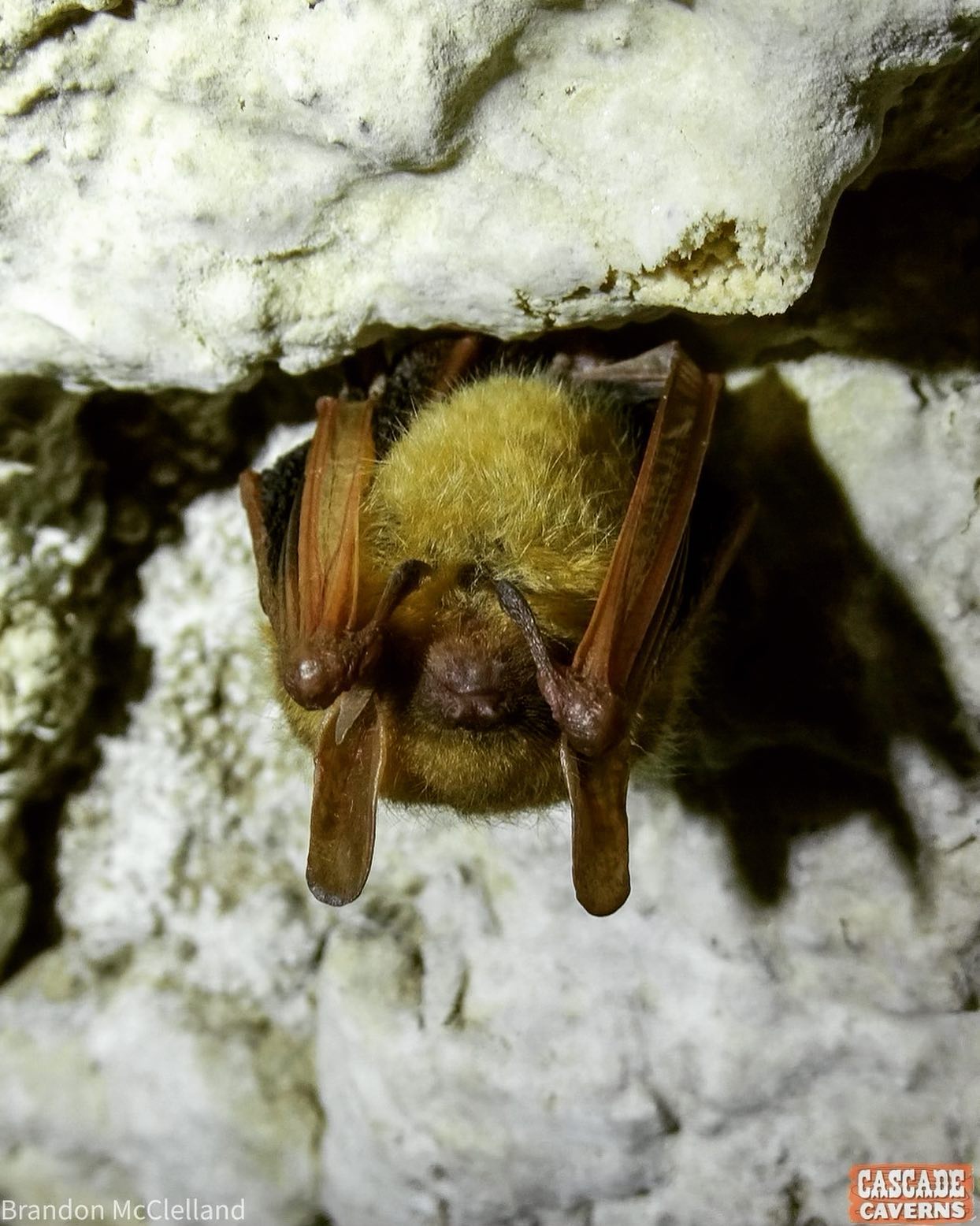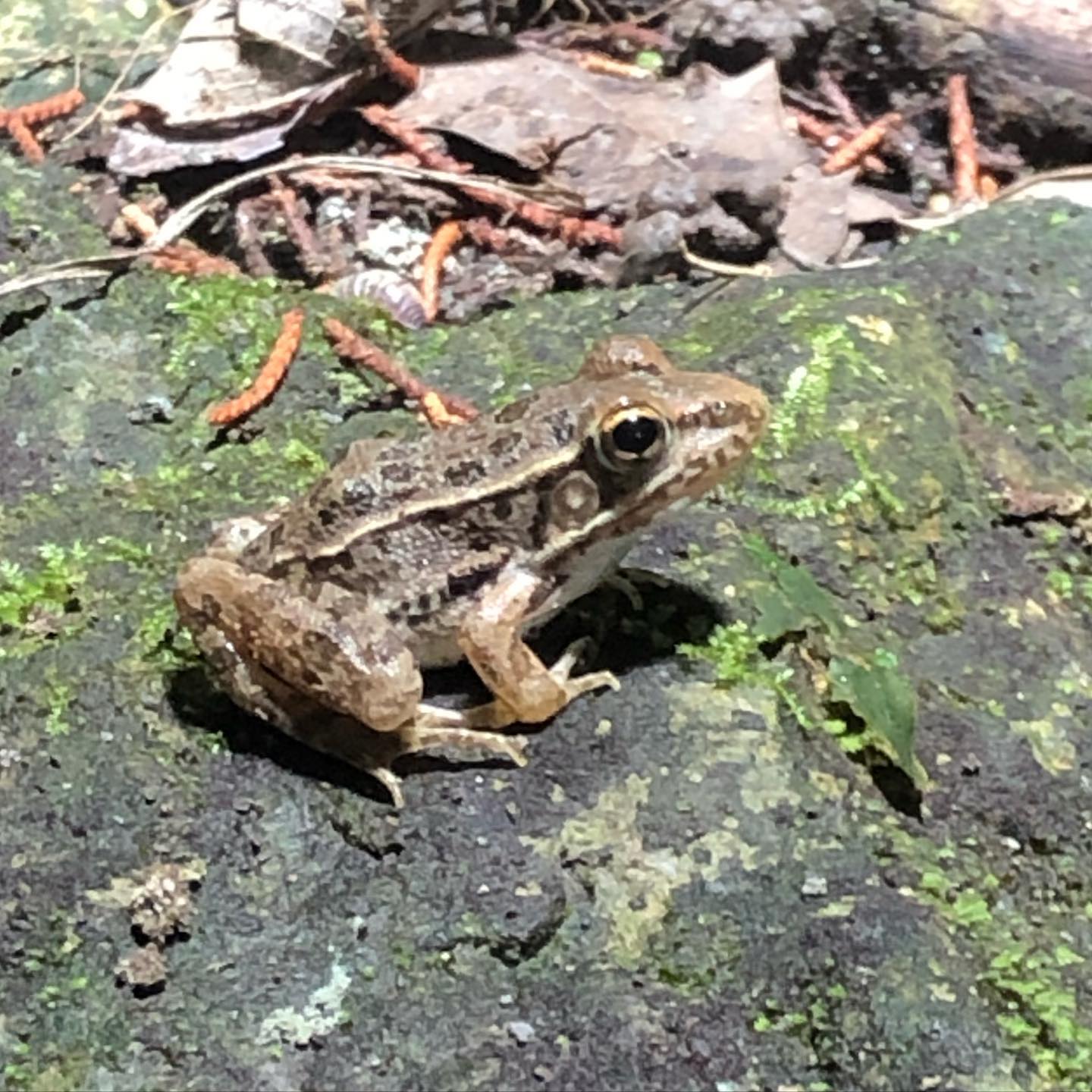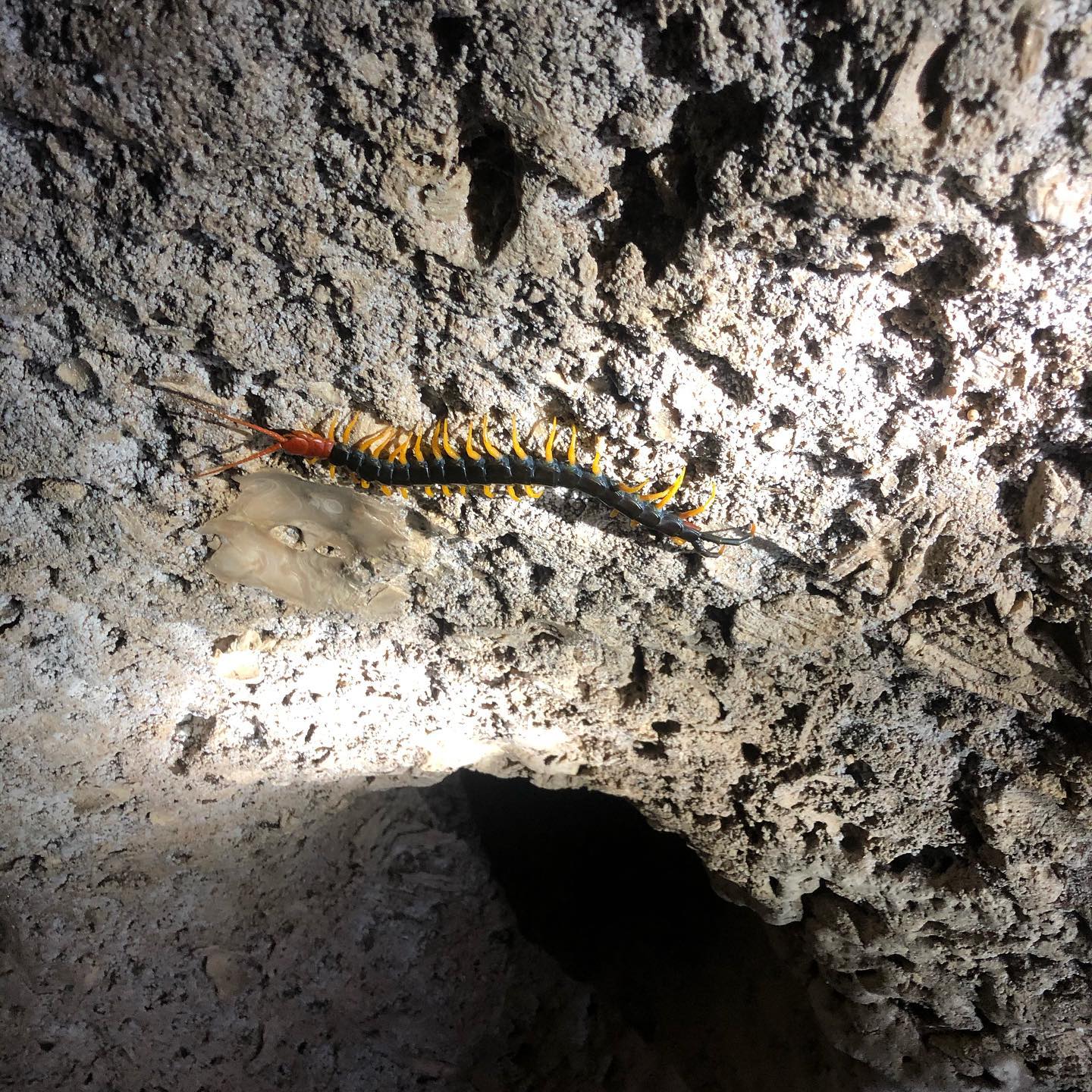Experience Science
Speleology & Geology

The Amazing World of Caves
The Study of Caves
Mastodon Fossil
See the photo below of a six-foot-long Mastodon tusk found in the cave.
Living Creatures
The cave is full of life from algae and bacteria to creepy crawly creatures found nowhere else in the world.
The minerals most common at Cascade Caverns® are calcium, magnesium, and iron oxide, or common rust. The most common forms are flowstone on walls and floors and stalactites from the ceilings. There are few stalagmites growing upward because the cave we now see is only the top portion of the whole original cave. During the major period of formation growth, the cave extended much deeper, therefore these types of formations have been covered by centuries of debris. At times in the past, the water table was much lower than at present and allowed the formation to grow far below the present cave level. We have evidence of this by finding a much large thick formation in the lower level extending into the water table.
Twin Sisters
Giant Molar
The Skull
Solutions Domes
It's Alive with wildlife
Critters & Crawlers
Meet our Cave Dwellers
Paleontology & Biology

Paleontology is a fascinating and rewarding field of studying fossils. It offers the opportunity to learn about the history of life on Earth and to understand the processes that have shaped our planet.
One of the most spectacular surprises has been the mastodon remains. In clearing additional mud from the front room to widen the passageway several years after the original excavations, a tusk six foot long was uncovered, circled around a rock.
Today there are only a few fragments of it left, due to early souvenir hunters, erosion from flooding, and decay. At the time it was discovered, there was flesh and hair around it. The flesh and hair disintegrated as soon as the air contacted them, while the workmen stood and watched.
The tusk was broken and so fragile it was decided not to try to move it. Also, the dry air would have turned it into chalk. In more recent times a mastodon shinbone appeared deeper in the cave.
In addition, bones of the saber-toothed tiger, the bison, and other more recent animals have been found along with those of man. Indian artifacts, remains of guns, and interesting geological specimens were removed. Some were sent to the Smithsonian Institute in Washington, D. C., to the University of Texas in Austin, to St. Mary’s in San Antonio, and to other institutions for study and identification. Many of the items stayed here in the Park. Most of these items were stolen while the Park was closed during World War Two.






